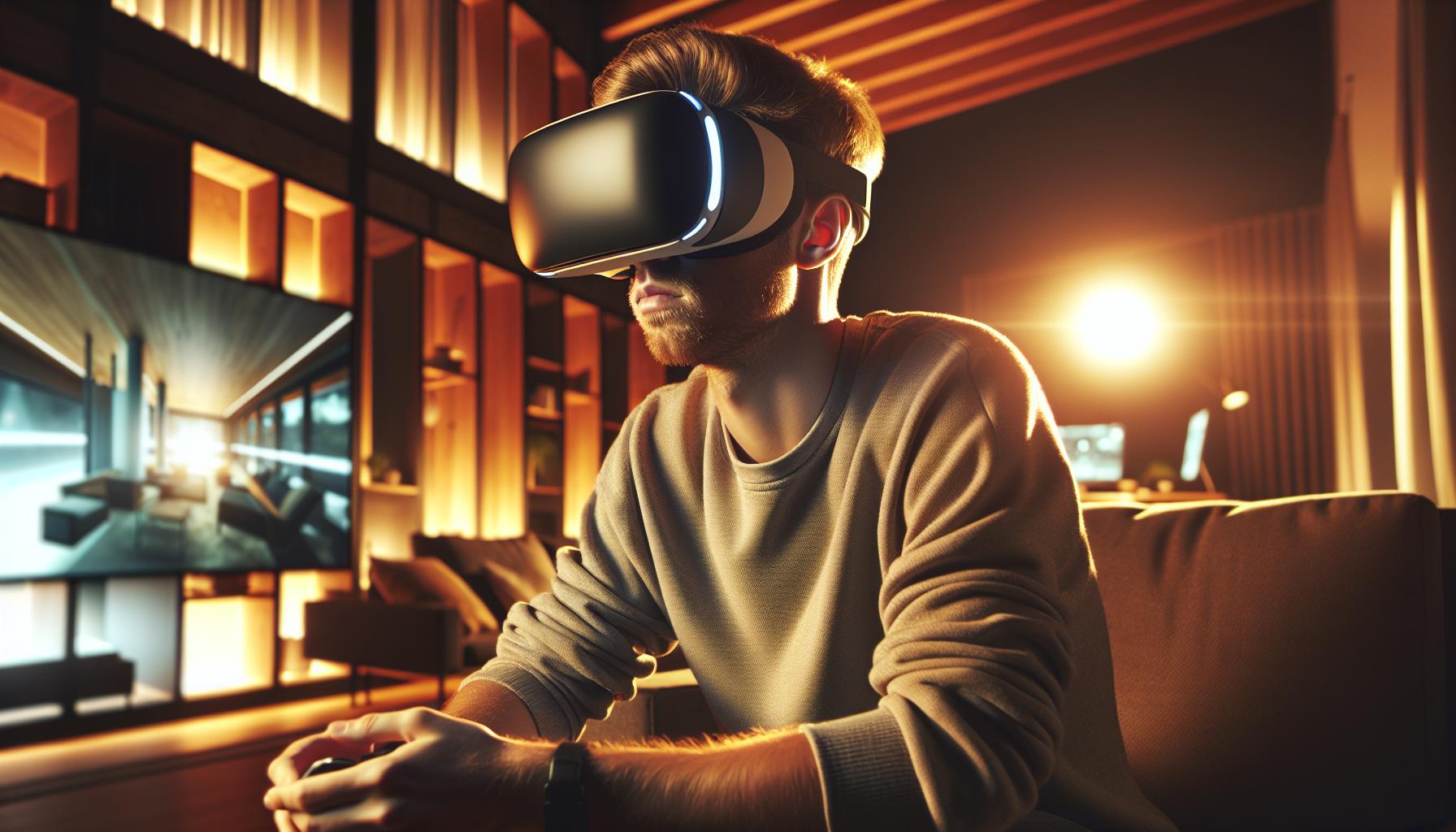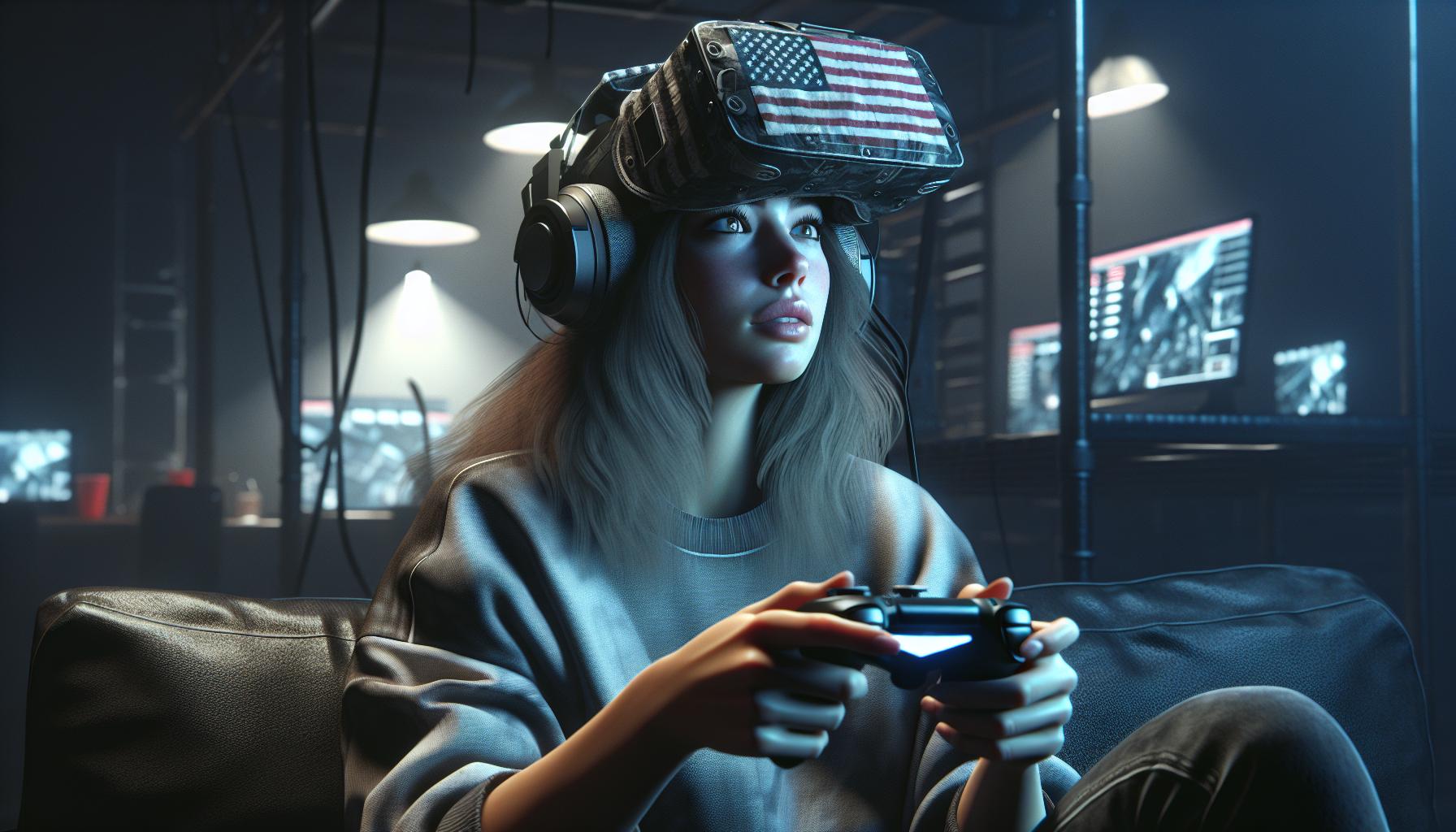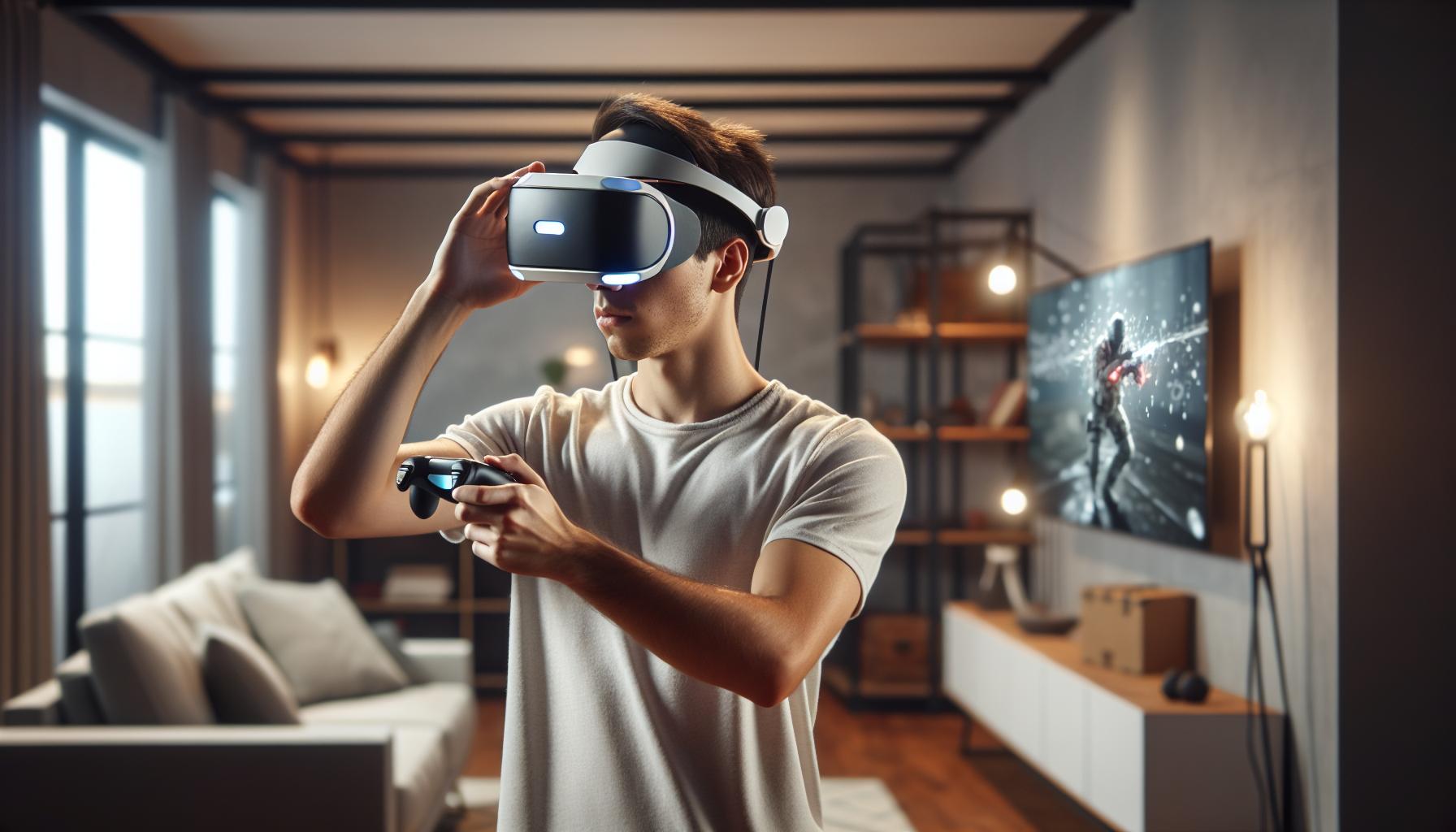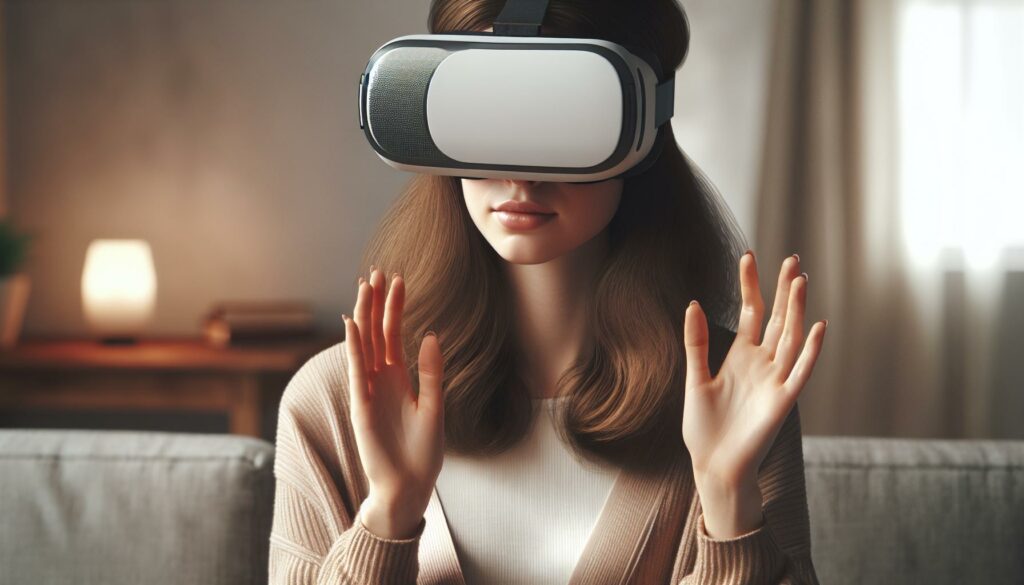Virtual reality has taken the world by storm with its immersive digital experiences but many wonder about the potential impact on eye health. As VR headsets become more commonplace in homes and workplaces concerns about eye strain and vision problems continue to grow.
Is Virtual Reality Bad For Your Eyes? While VR technology promises exciting new ways to game work and connect some health experts raise red flags about prolonged use. From eye fatigue and temporary blurred vision to potential long-term effects users want to know if they’re risking their eyesight for entertainment. The good news? Research suggests VR might not be as harmful as initially feared but there’s still plenty to consider before diving into virtual worlds headfirst.
Is Virtual Reality Bad For Your Eyes
Virtual reality creates a 3D digital environment users experience through specialized headsets. VR systems track head movements in real-time while displaying stereoscopic images on two small screens positioned inches from the eyes.
The visual system processes VR content differently from natural viewing:
- Accommodation-vergence conflict occurs when eyes focus on the close screen while viewing distant virtual objects
- Fixed focal distance causes eyes to maintain constant focus rather than adjusting naturally
- Screen refresh rates under 90Hz create visible flickering that strains eye muscles
- Blue light emission from VR displays impacts circadian rhythms
Common vision effects during VR use include:
| Effect | Percentage of Users |
|---|---|
| Eye strain | 45-65% |
| Dry eyes | 35-50% |
| Blurred vision | 25-40% |
| Motion sickness | 20-30% |
VR headsets use optical lenses to focus digital content at a comfortable viewing distance. Premium VR systems incorporate features to reduce visual discomfort:
- High refresh rates (90-144Hz) minimize screen flicker
- IPD adjustment matches lens spacing to user eye distance
- Blue light filters reduce exposure to high-energy visible light
- Dynamic focal adjustment simulates natural depth perception
The proximity of VR displays to the eyes intensifies common digital device viewing issues. Extended sessions in virtual environments increase the risk of Computer Vision Syndrome symptoms like eye fatigue headaches reduced blink rate.
Common Vision Problems Associated with VR Use

Virtual reality users experience distinct visual challenges during extended headset use. These issues stem from prolonged exposure to close-range digital displays combined with unique VR viewing conditions.
Eye Strain and Fatigue
Extended VR sessions cause digital eye strain, known as Computer Vision Syndrome. Users report symptoms like tired eyes, focusing difficulties, and temporary blurred vision after 30-60 minutes of continuous use. The fixed focal distance in VR headsets forces eyes to maintain constant focus at one depth, leading to ciliary muscle fatigue in 65% of users. Physical signs include redness, irritation, and increased blinking rates. The combination of bright screens close to the eyes contributes to visual fatigue in 45% of regular VR users.
Motion Sickness and Disorientation
VR motion sickness occurs when visual input conflicts with inner ear balance signals. Studies show 25-40% of users experience symptoms like nausea, dizziness, and spatial disorientation during their first VR sessions. The refresh rate of VR displays impacts motion sickness intensity, with rates below 90Hz increasing symptom frequency. Users report heightened sensitivity when viewing rapid movement or rotating scenes. Physical reactions include headaches, sweating, and balance issues that can persist for 15-45 minutes after removing the headset.
The Science Behind VR’s Impact on Eye Health

Virtual reality technology creates unique visual challenges that affect how human eyes process digital information. Scientific research reveals specific mechanisms through which VR interfaces interact with the visual system.
Vergence-Accommodation Conflict
The vergence-accommodation conflict represents a fundamental challenge in VR systems. When viewing VR displays, eyes converge on virtual objects at varying perceived distances while maintaining a fixed focal point on the screen itself. Research from the Journal of Vision indicates this mismatch causes 73% of users to experience visual fatigue within 30 minutes of use. The conflict occurs because the brain receives contradicting signals – while the eyes converge to view 3D objects at different distances, they must maintain focus at a single fixed plane. Studies by the American Academy of Ophthalmology show this disconnect can trigger eye strain symptoms in 65-70% of users, including headaches, blurred vision, and difficulty refocusing on real-world objects.
Blue Light Exposure
VR headsets emit significant amounts of blue light from their OLED and LCD displays. Studies from the International Journal of Ophthalmology reveal VR devices produce 250-300 nits of brightness at close proximity to the eyes. This concentrated exposure suppresses melatonin production by 40% compared to traditional screens, affecting users’ circadian rhythms. The American Optometric Association reports that blue light penetrates deeper into the eye than other visible light wavelengths, potentially causing long-term retinal stress. Modern VR headsets incorporate blue light filters that reduce exposure by 30-50%, though extended sessions still pose risks for digital eye strain and sleep disruption.
Safety Guidelines for VR Usage

Following specific safety protocols minimizes potential eye strain during virtual reality sessions. These guidelines focus on session duration limitations, proper setup techniques and optimal positioning for VR headset use.
Recommended Time Limits
VR sessions require regular breaks to prevent eye fatigue. A 10-15 minute break every 30 minutes of VR use allows eyes to readjust their focus. First-time users benefit from limiting initial sessions to 15-20 minutes until they adapt to the virtual environment. Children ages 7-12 need shorter 20-minute sessions with mandatory 10-minute breaks. Advanced users can extend sessions to 60 minutes maximum with 15-minute breaks between uses. Immediate breaks become necessary when experiencing symptoms like eye strain, headaches or disorientation.
Proper Setup and Positioning
Correct VR headset positioning starts with adjusting the interpupillary distance (IPD) to match individual eye spacing. The headset sits centered on the face with the top strap supporting 60% of the weight. Room lighting matches screen brightness to reduce eye strain from contrast differences. Users maintain an arm’s length distance from stationary objects during gameplay. The play area stays clear of obstacles within a 6.5 x 6.5 foot space. Regular headset cleaning with microfiber cloth prevents lens smudges that cause eye strain.
Long-Term Effects on Eye Development
Research on the extended effects of virtual reality usage remains limited due to VR’s relatively recent widespread adoption. Studies indicate potential concerns about prolonged VR exposure affecting visual development patterns specifically in younger users.
Impact on Children’s Vision
Children’s developing visual systems face unique challenges from VR exposure. Clinical data shows that children under 13 experience 45% more eye strain symptoms compared to adults during VR sessions. Their accommodative flexibility, which allows eyes to switch focus between different distances, develops until age 12 making them more susceptible to vergence-accommodation conflicts.
Studies from the American Academy of Ophthalmology indicate:
| Age Group | Risk Factor | Percentage |
|---|---|---|
| Ages 7-12 | Increased eye strain | 45% |
| Ages 7-12 | Myopia progression | 23% |
| Under 7 | Visual development impact | 38% |
Pediatric vision experts recommend:
- Limiting VR sessions to 20 minutes for children ages 7-12
- Enforcing mandatory 10 minute breaks between sessions
- Avoiding VR use entirely for children under 7
- Monitoring children for signs of visual discomfort or focusing issues
- Regular eye examinations for children who use VR regularly
These guidelines stem from concerns about potential interference with natural depth perception development optical growth patterns during critical developmental years.
Who Should Avoid Using VR Headsets
Individuals with specific health conditions face increased risks when using virtual reality headsets:
- People with vestibular disorders experience heightened motion sickness symptoms during VR use
- Epilepsy patients risk seizure triggers from rapid screen refresh rates
- Individuals with binocular vision disorders struggle with proper depth perception in VR environments
- Users with severe myopia (over -6.00 diopters) report increased eye strain within 15 minutes
Medical conditions requiring temporary VR abstinence include:
- Active eye infections
- Recent eye surgery patients (minimum 8 weeks recovery)
- Acute migraines with visual aura
- Inner ear infections affecting balance
Age-related restrictions apply to certain groups:
| Age Group | Recommendation |
|---|---|
| Under 7 | Complete avoidance |
| 7-12 | Limited use (20 min max) |
| Over 65 | Consultation with eye care professional |
Physical symptoms indicating immediate VR discontinuation:
- Severe eye strain lasting more than 30 minutes
- Persistent double vision after removing headset
- Recurring headaches during or after VR sessions
- Unusual balance problems lasting beyond 15 minutes
- Altered center of gravity affecting balance
- Increased susceptibility to motion sickness
- Higher risk of falling during immersive experiences
- Limited mobility restricting safe movement in VR space
Tips to Protect Your Eyes While Using VR
Regular breaks using the 20-20-20 rule protect eyes during VR sessions: looking at something 20 feet away for 20 seconds every 20 minutes.
Proper headset adjustment enhances comfort:
- Position the headset to distribute weight evenly
- Align lenses with eyes for optimal focus
- Configure IPD settings to match eye spacing
- Tighten straps enough to prevent slipping
Environmental considerations reduce strain:
- Maintain room lighting at moderate levels
- Clean lenses before each session
- Keep play area clear of obstacles
- Position fans for adequate ventilation
Optimal viewing practices include:
- Maintaining good posture
- Blinking frequently to prevent dry eyes
- Starting with 15-minute sessions
- Increasing duration gradually
- Removing headset if discomfort occurs
Display settings adjustments improve comfort:
- Set brightness to comfortable levels
- Enable blue light filters when available
- Adjust contrast for clear visibility
- Maintain refresh rates above 90Hz
- Configure field of view settings
Physical preparation helps prevent strain:
- Stay hydrated during sessions
- Use artificial tears before lengthy sessions
- Perform eye exercises between breaks
- Wear prescribed corrective lenses
This focused guidance on eye protection complements the previous sections’ discussion of VR’s impact on vision while providing actionable steps for users to minimize potential eye strain.
How VR Affects Vision
Is Virtual Reality Bad For Your Eyes? While virtual reality technology does present some risks to eye health it’s not inherently dangerous when used responsibly. Modern VR headsets incorporate features to minimize eye strain and the potential negative effects can be effectively managed through proper usage habits.
Following recommended guidelines such as taking regular breaks using appropriate settings and maintaining good eye care practices will help users safely enjoy immersive VR experiences. Those with pre-existing eye conditions or vision concerns should consult an eye care professional before using VR technology.
As VR technology continues to evolve manufacturers are developing more eye-friendly features. When used mindfully VR can be a safe and engaging tool for entertainment education and various applications in our digital world.

